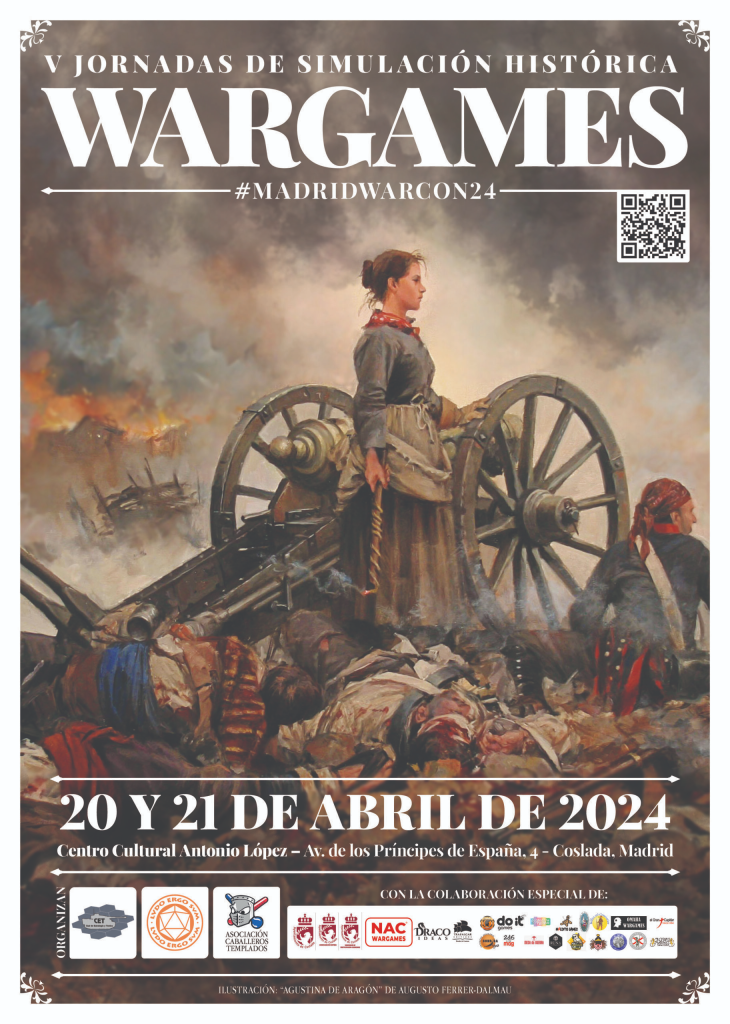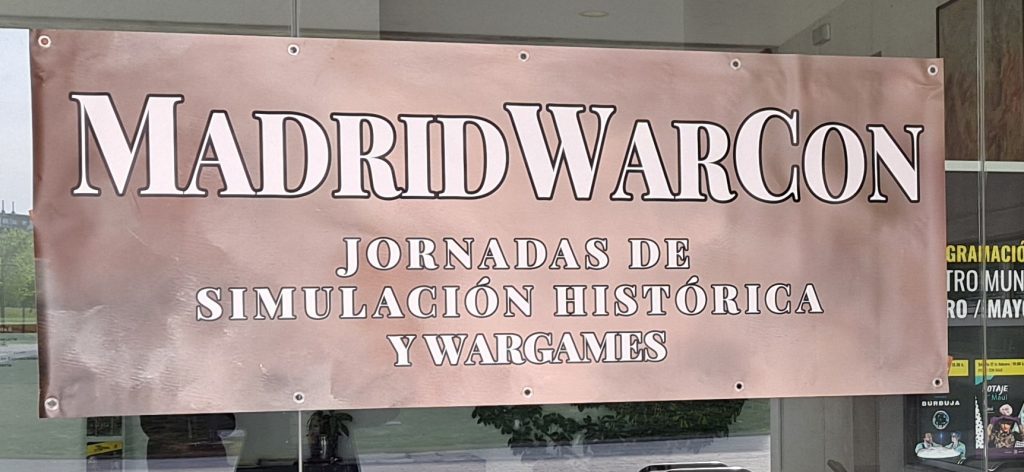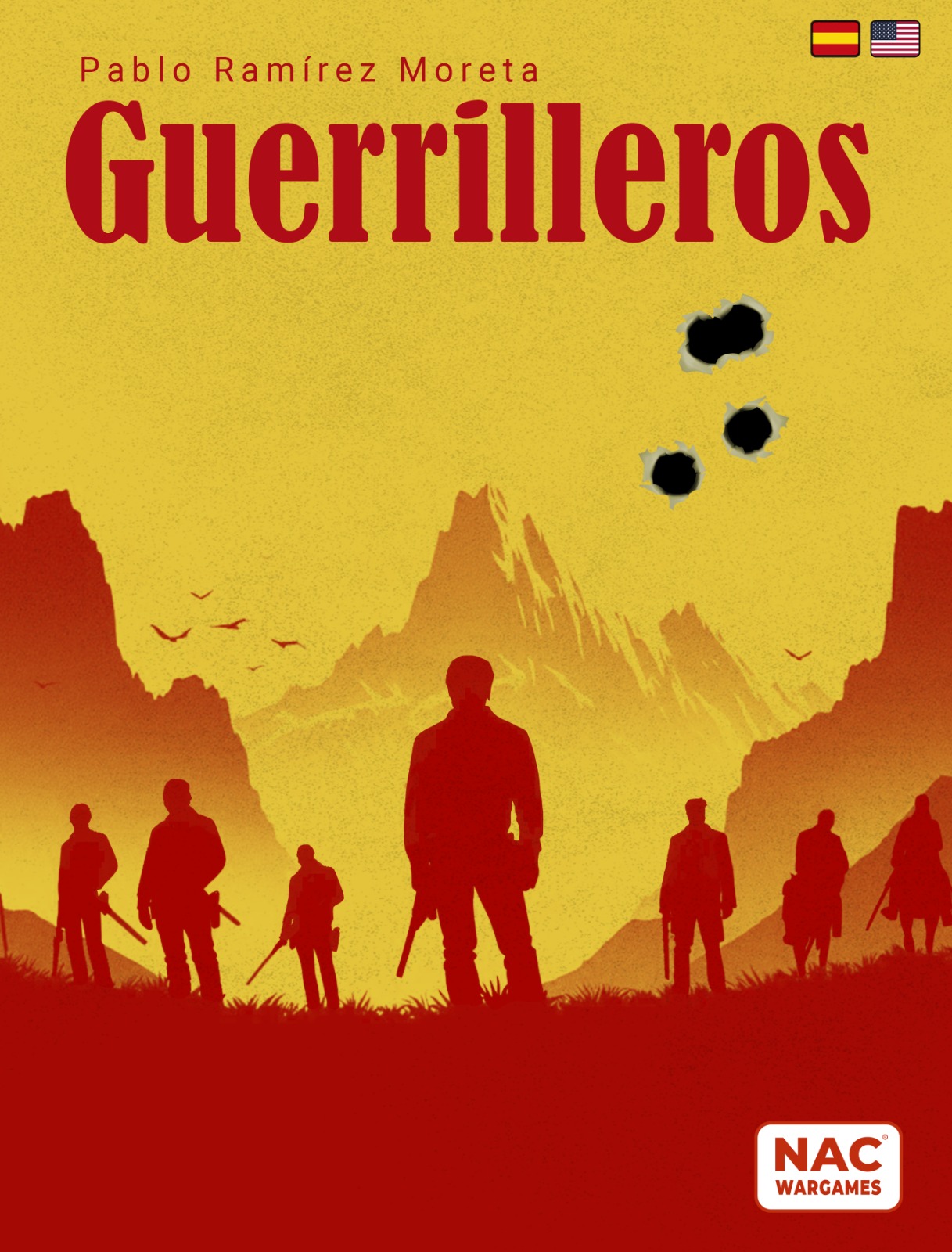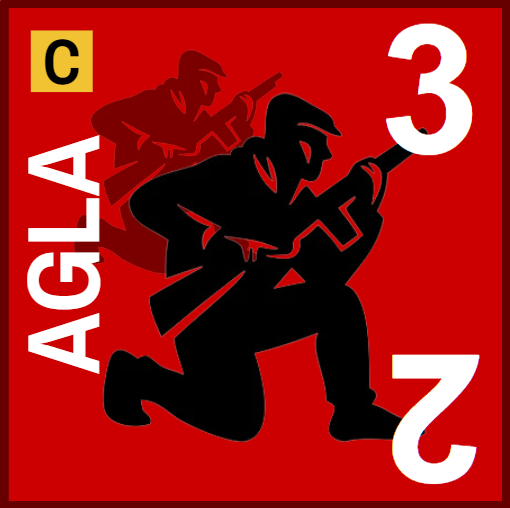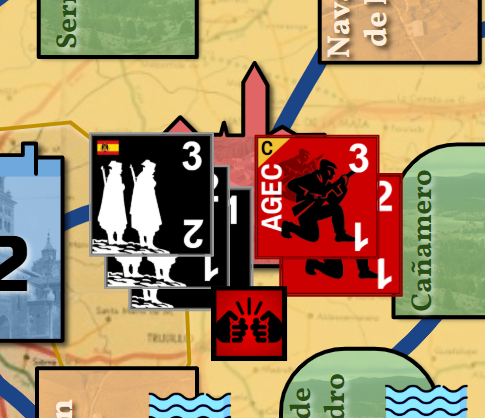
Look for the blue banner below and read this entry in English!
Aunque la primera vez que Guerrilleros vio mesa como prototipo funcional fue en las 7 BellotaCon de Badajoz (enero de 2024), la verdadera «primera luz» del juego en su versión más evolucionada, y por primera vez dentro del P500 de NAC Wargames, fue en las fantásticas y muy bien organizadas V Jornadas de Wargames y Simulación Histórica de Madrid (o MadridWarCon24).
Las MadridWarCon24 se celebraron del 20 al 21 de Abril de 2024 en el Centro Cultural Antonio López de Coslada, Madrid, y han sido organizadas por la Asociación Caballeros Templados, la Asociación Ludo Ergo Sum, y las editoriales Trafalgar Ediciones y Draco Ideas.
Por si acaso no resulta obvio para todo el mundo, la importancia de las convenciones y jornadas para ayudar a los diseñadores y desarrolladores de juegos es realmente importante. Yo diría crítica.
La razón es simple: la exposición del juego a la gente y la emisión/recepción de ideas, consejos y sugerencias que permiten estos eventos, son únicas.
La visibilidad de un prototipo es, generalmente, limitada. Lógicamente, no suele ser por falta de ganas del diseñador o la editorial, quienes trabajan para que un juego salga adelante, sino por el natural desconocimiento que tiene la comunidad de un juego en desarrollo y lo difícil que puede resultar sacarlo a mesa si no perteneces a un club lleno de gente dispuesta a jugar cualquier cosa. Pero es que, aun disponiendo de un club y su gente, los prototipos necesitan aún más. Más gente, más partidas, más opiniones, más críticas… y esto no siempre es fácil de conseguir.
En las primeras etapas de diseño y desarrollo de un juego, las redes sociales son la vía inicial de penetración en las comunidades e individuos potencialmente interesados. Además, las implementaciones del juego en plataformas o «mesas» virtuales/digitales (tipo Vassal, Tabletop Simulator, etc.) son fundamentales para que muchas de esas personas interesadas prueben un juego que ‘no existe’ físicamente. Sin embargo, no es necesariamente sencillo conseguir tener pronto una versión digital del juego, más aún cuando va a necesitar cambios frecuentes debido a su natural evolución.
En mi opinión, son estas convenciones y jornadas las que actúan (o pueden actuar) como mejor altavoz, escaparate y ‘entidad analógica’ o táctil, que les falta a las redes sociales y medios virtuales, a la hora de mostrar y probar un juego en desarrollo. Y en el fondo, todos los aficionados/as buscamos sentarnos, desplegar tableros, poner fichas y jugar partidas junto a antiguos y nuevos amigos y amigas, así que todos ganamos.
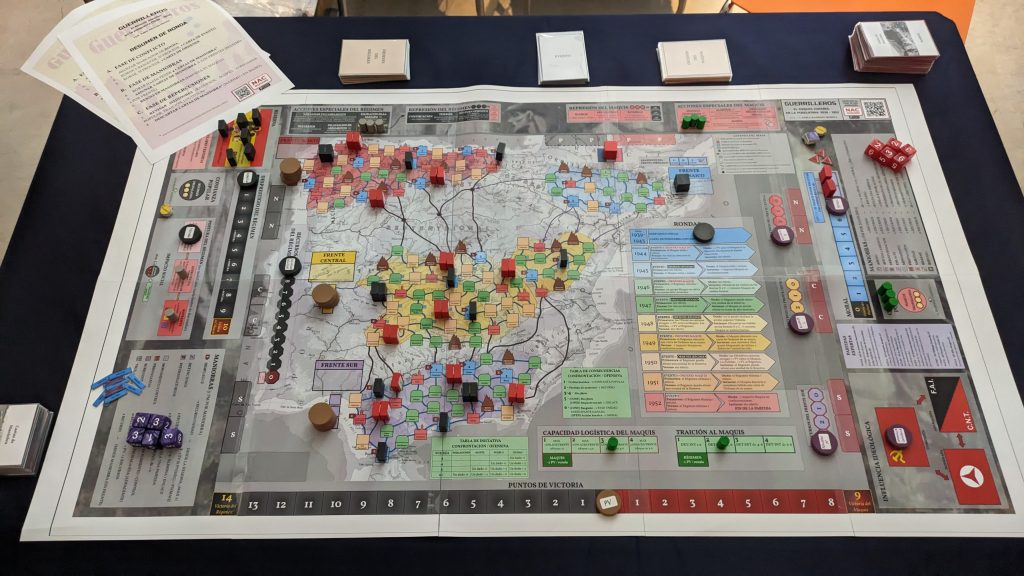
Esa tactilidad, la posibilidad de ver el juego, jugarlo con sus componentes, fichas, cartas, tablero… es un ingrediente fundamental para el éxito de un juego en desarrollo. Quizás el más determinante de los ingredientes. Incluso aunque les falte un diseño gráfico decente, haya errores y sean cutres en su manufactura, jugar un prototipo de forma física produce una sensación de existencia, de entidad real, que trasciende a la mera prueba de las mecánicas, sino que permite la observación de las dinámicas generadas, las sensaciones durante la partida y las conclusiones finales tras terminarla.
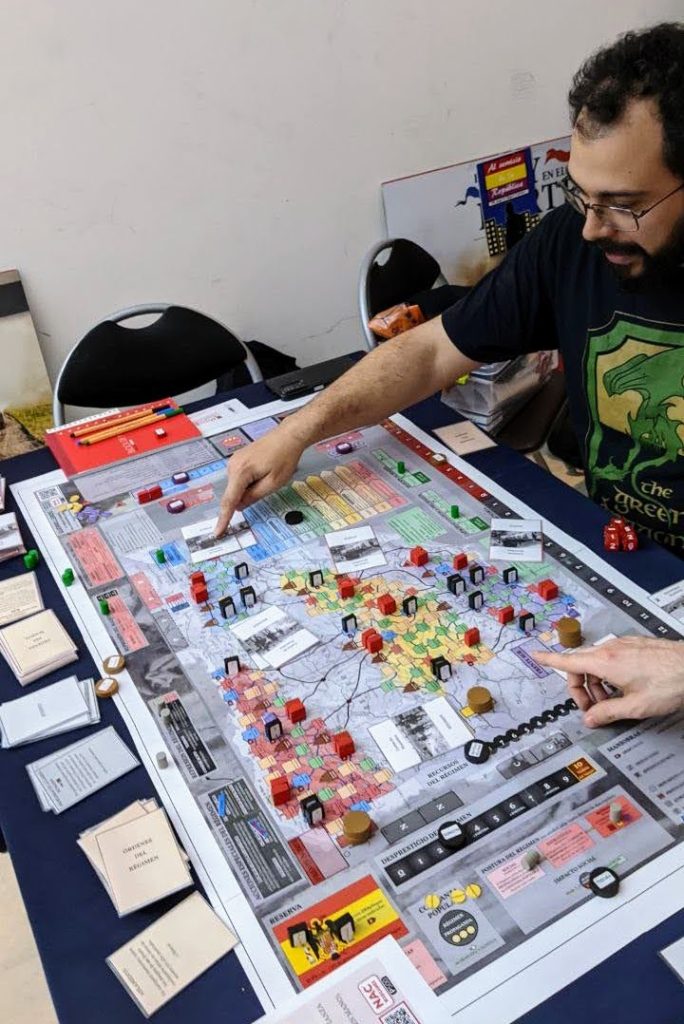
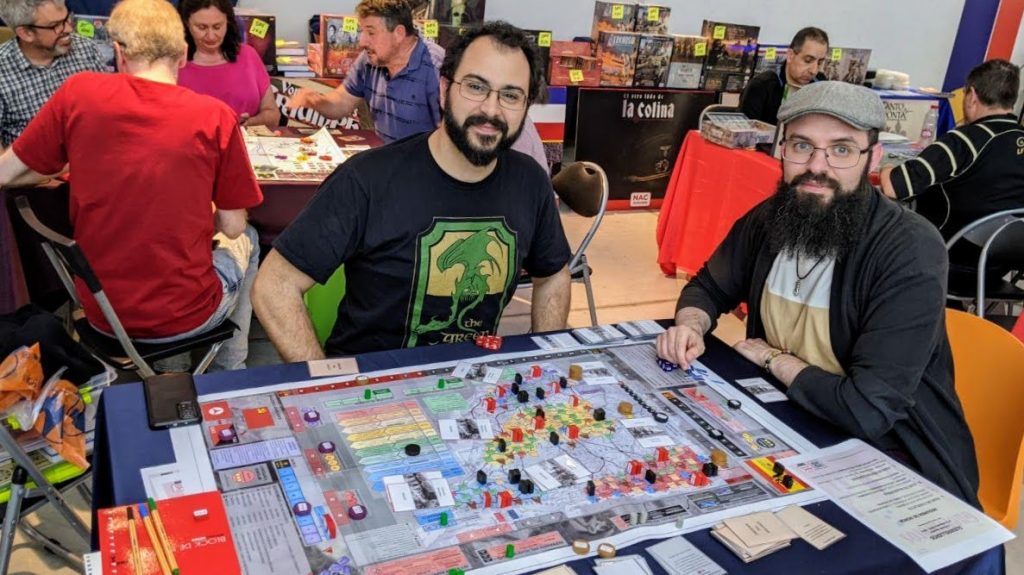
Foto superior: a punto de acabar una partida con JD, un amable jugón que se interesó por el juego y decidió darle varias horas de su tarde del sábado.
¡Gracias, JD!
Sin más, concluyo esta entrada con la que era mi única intención: agradecer no sólo a los asistentes sino a las personas que organizan y apoyan eventos relacionados con juegos de mesa en los que, además de preocuparse porque todo salga bien, se acuerdan de los juegos en desarrollo y nos dan una oportunidad para mostrarlos.
¡Por muchas convenciones y jornadas más!
ME INTERESA LO QUE VEO, ¡QUIERO QUE SEA PUBLICADO!
En la siguiente entrada…
Describiré una «ficha técnica» del juego, aclarando los aspectos más generales del mismo como por ejemplo:
- Escala
- Unidades
- Tablero/mapa
- Cartas
- … ¡y más!

English version
Guerrilleros in MadridWarCon24
Although the first time a working prototype of Guerrilleros was laid on a table was at the 7 BellotaCon in Badajoz (January 2024), the real «first light» of the game in its more evolved version (and for the first time within the P500 program of NAC Wargames), was at the fantastic and very well organised V Jornadas de Wargames y Simulación Histórica de Madrid (or MadridWarCon24).
The MadridWarCon24 was held from the 20th to the 21st of April 2024 at the Centro Cultural Antonio López in Coslada, Madrid, and was organised by the Asociación Caballeros Templados, the Asociación Ludo Ergo Sum, and the publishers Trafalgar Ediciones and Draco Ideas.
In case it is not obvious to everyone, the importance of conventions and conferences to help game designers and developers is really important. I would say critical.
The reason for this is simple: the exposure of the game to people and the airing/receiving of ideas, advice and suggestions that these events allow, are unique.
The visibility of a prototype is limited. Logically, this is not due to a lack of desire on the designer or publisher side, who work to make a game raise and shine, but because of the community’s natural lack of knowledge of an in-development game and the intrinsic difficulty of bringing it to the tables if the author does not belong to a club full of people eager to play prototypes. But even if you belong to a club, prototypes need even more. More people, more games, more opinions, more criticism… and this is not always easy to achieve.
In the early stages of game design and development, social networks are the starting point to penetrate potentially interested communities and individuals. In addition, implementations of the game on virtual/digital tabletop platforms (such as Vassal, Tabletop Simulator, etc.) are key to getting many of those interested people to try out a game that ‘doesn’t exist’ physically. However, it is not necessarily easy to get a digital version of the game soon enough, even more so when it will need frequent changes due to its natural development.
In my opinion, it is these conventions and conferences that act (or can act) as the best loudspeaker, showcase and ‘analogical’ or tactile entity, which social networks and virtual media lack when it comes to showcasing and testing a game in development. And, at the end of the day, what all fans are looking for is to sit down, lay out the boards, set up the pieces and play games with old and new friends. So, these events are a win-win for everyone.
This tactility, the possibility of seeing the game, playing it with its not-final-but-physical components, counters, cards, board… is a fundamental ingredient for the success of a game in development. Perhaps the most decisive ingredient. Even if they lack a decent graphic design, the errors and their usually poor and quick manufacture, playing a prototype in its physical form produces a sensation of existence, of real entity, that transcends the mere testing of the mechanics, allowing the observation of the dynamics generated, the sensations during the game and the final conclusions after ending it.


Top picture: about to end a short game with JD, a nice fellow player who decided to give it a shot on Saturday afternoon. Thank you, JD!
Without further ado, I conclude this entry with what was my only intention: to thank not only the attendees but the people who organise and support events related to board games in which, besides worrying about everything going well, they do not forget about the games in development and give us an opportunity to show them.
Here’s to many more conventions and conferences!
I’M INTERESTED IN WHAT I SEE, I WANT IT TO BE PUBLISHED!
If you are interested in this game and you want it to see it published, sign up for free and without obligation to the NAC Wargames P500 to get it published, by CLICKING here!
In the next entry…
I will describe a quick technical guide to the game, shedding light over its general aspects, such as:
- Scale
- Units
- Map
- Cards
- … and more!

